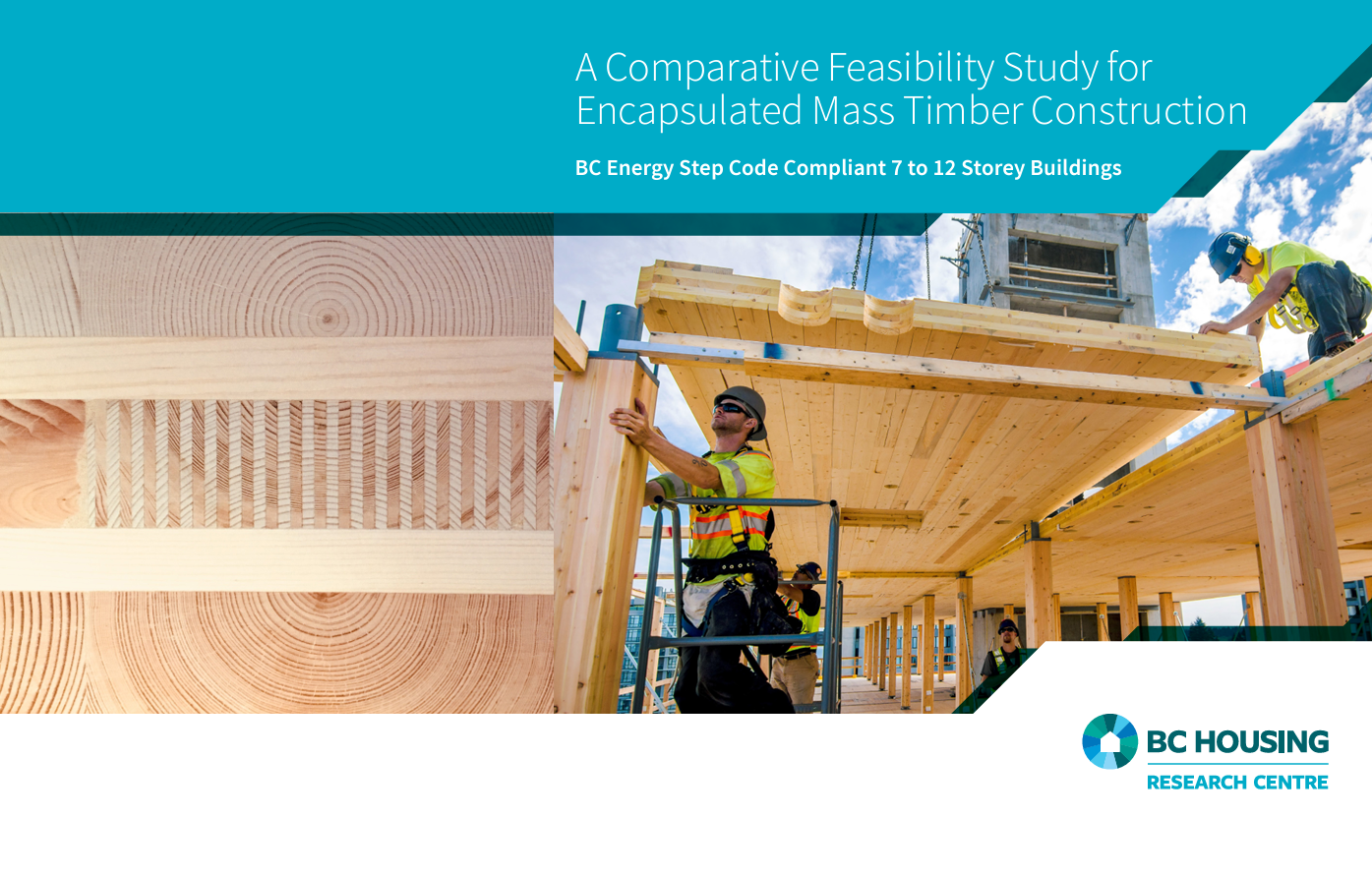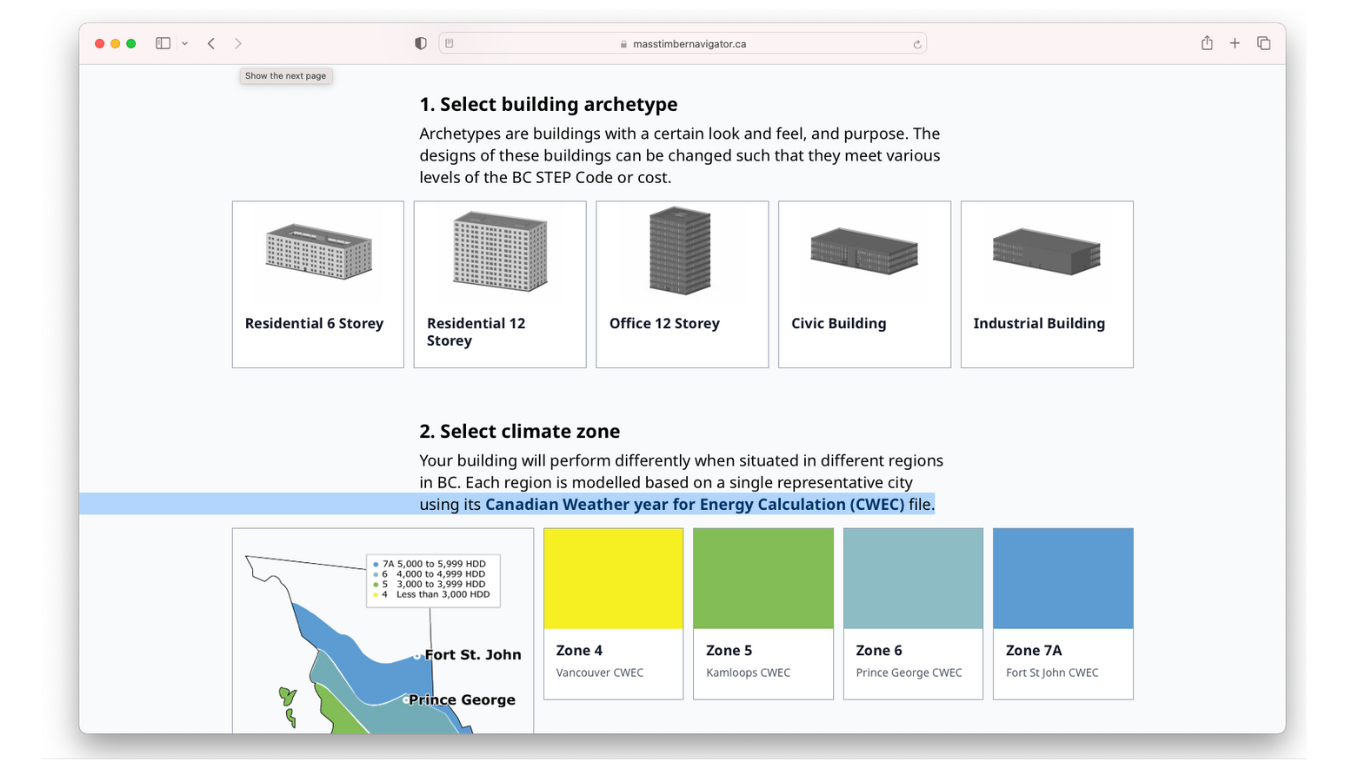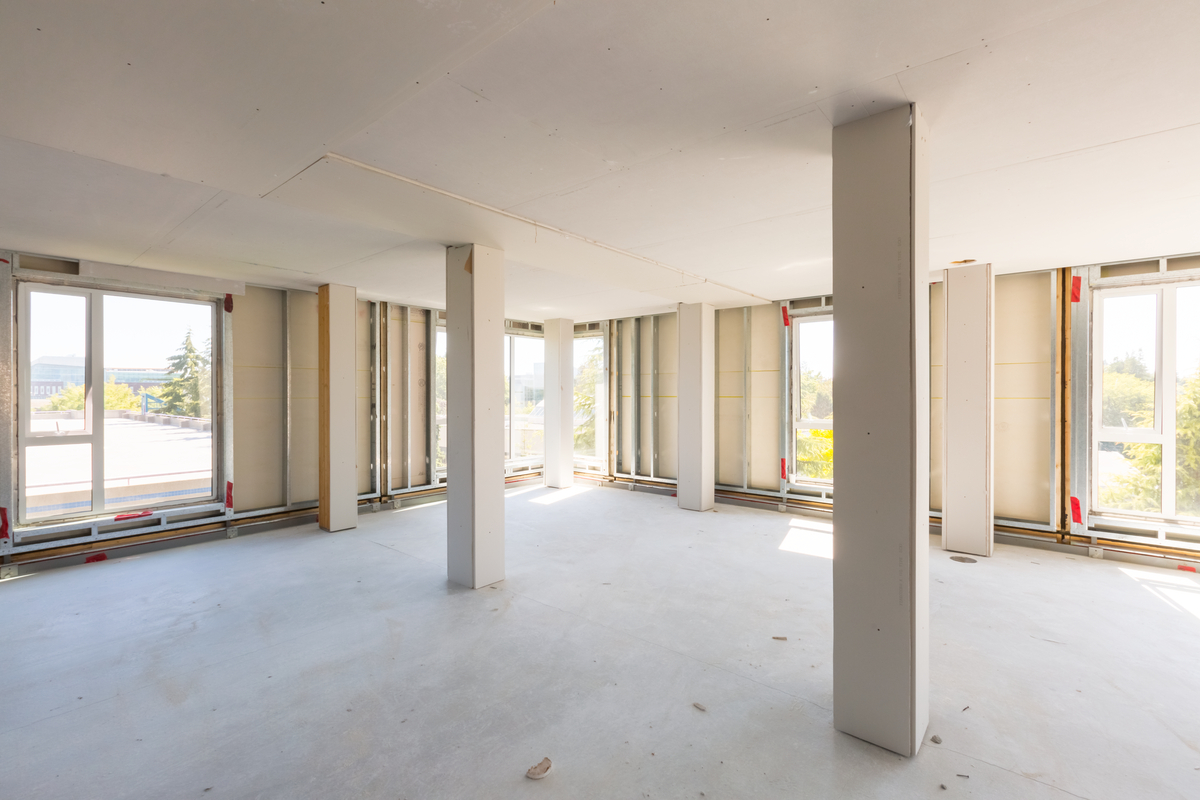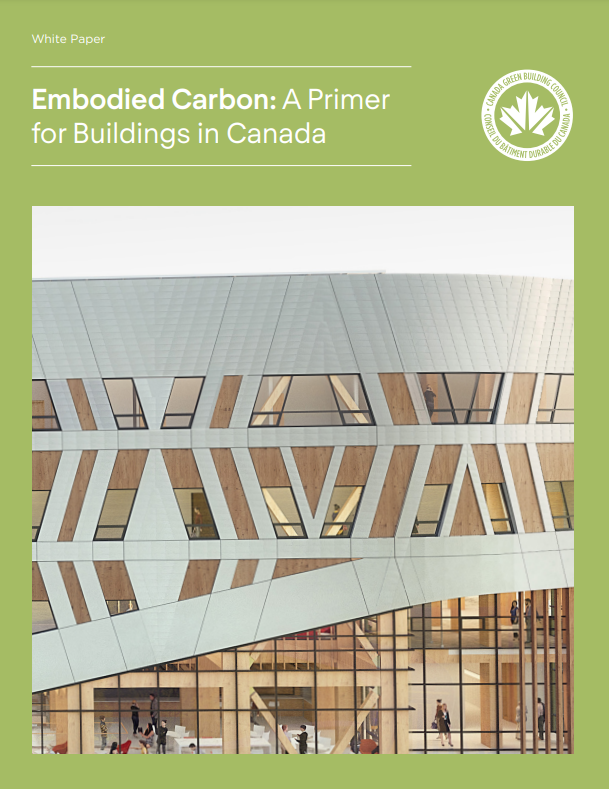Across Canada more knowledge of the costs, benefits, design development, and supply chain implications of encapsulated mass timber construction (EMTC) is needed. “A Comparative Feasibility Study for Encapsulated Mass Timber Construction” compares costs between concrete, steel, and EMTC in 7-12 storey buildings. The study examines building forms in three different climate regions and presents practical approaches to using EMTC structural components and building concepts. The report considered embodied carbon reductions, thermal performance and avoided emissions. It also explores GHG emissions in compliance with provincial regulations as well as the financial viability of EMTC as a solution to address carbon emissions, energy use and the need for affordable housing.
To compare methods and means of construction, the researchers developed comprehensive seven to 12-storey archetypes using point-supported 7-ply CLT, three typical building styles in three BC bylaw and climatic regions — Vancouver, Coquitlam and Kamloops. Many of the design strategies developed in the three EMTC archetypes are solutions for improving building performance and durability. These solutions enable the best potential use of biogenic carbon as part of a complete carbon-removal strategy.
A larger goal is to ensure most carbon emissions from buildings are locked in at the time a building is completed. Increasingly, EMTC buildings are being considered for further embodied carbon reductions due to biogenic carbon removal and for providing a solution to the complexity and cost of concrete or steel buildings while complying with the BC Energy Step Code and Carbon Step Code.
The report was prepared by Morrison Hershfield, Public, Fast + Epp, Hanscomb Quantity Surveyors and Seagate Mass Timber Inc. in partnership with BC Housing, BC Office of Mass Timber Implementation, Canadian Wood Council, Canada Mortgage and Housing Corporation, Forestry Innovation Investment and Governement of Canada.
In parallel with this study, the Mass Timber Navigator was developed to allow researchers to assess both EMTC feasibility and energy code compliance. The tool is an online early design and Energy and Mass Timber parametric costing program. Comparative feasibility data for real estate analysis generated by the Navigator can also be used by developers to produce real estate proformas.
Key insights
- When assessing economic advantages of EMTC, researchers found three key processes that reduce project costs compared to steel and concrete: increased speed of construction; integration of mass timber structures and façades; and optimization of mechanical and electrical systems.
- Lifecycle cost advantages offer the best opportunity for EMTC projects to produce the highest ROI.
- Regarding the Canada Green Building Council’s Net Zero Carbon Performance Standard, report recommendations include: adopting low-carbon energy systems, electrification and low-carbon grids to reduce GHG intensity; and adopting offsite, prefabricated construction to improve building performance and lower costs.
Who is this report for?
- Developers, builders, engineers, design professionals, building product manufacturers & suppliers: This report offers information on the cost factors associated with EMTC, its compliance with the BC Energy Step Code and BC’s Zero Carbon Step Code, and its potential role in reducing GHG emissions. As well, it presents practical approaches to using EMTC structural components and building concepts that are tested, certified and practice-oriented standard solutions.
- Local government officials: Planners, environmental staff and elected officials can use this report to develop policies focused on promoting and allowing low-carbon construction, and to aid in the approval process for increased numbers of EMTC buildings, both residential and commercial.




